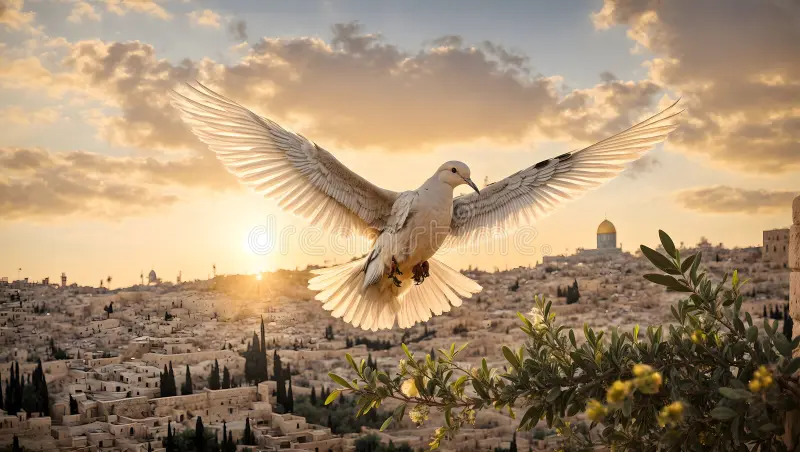Explore the critical details of the Israel-Hamas truce, its implications for Gaza, and the broader geopolitical impact on the Middle East. Israel, Hamas, Gaza, Middle East Peace, Geopolitics
Israel-Hamas Truce: Unpacking the Agreement and Its Far-Reaching Implications
The ongoing conflict between Israel and Hamas has reached a critical juncture with the announcement of a truce agreement. While this development marks a significant moment in a long-standing conflict, it raises questions about its sustainability, the motivations of the involved parties, and the broader geopolitical implications.
Understanding the Truce: Key Points of the Agreement
The truce, brokered with the assistance of international mediators, is set to unfold in three stages. Here’s what each phase entails:
- The Humanitarian Phase (First Six Weeks)Daily delivery of 400 humanitarian aid shipments, including food, water, and medical supplies, into Gaza.Partial withdrawal of Israeli forces from key areas within Gaza, with women and children allowed to return to certain northern and central regions.The release of civilian hostages held by Hamas, including women and children, in exchange for Palestinian prisoners with minor charges.
- Daily delivery of 400 humanitarian aid shipments, including food, water, and medical supplies, into Gaza.
- Partial withdrawal of Israeli forces from key areas within Gaza, with women and children allowed to return to certain northern and central regions.
- The release of civilian hostages held by Hamas, including women and children, in exchange for Palestinian prisoners with minor charges.
- The Second PhaseContinued exchange of prisoners, including Palestinians serving life sentences, though top Hamas leaders are excluded from the deal.Discussions on a broader withdrawal of Israeli forces, particularly from northern Gaza.
- Continued exchange of prisoners, including Palestinians serving life sentences, though top Hamas leaders are excluded from the deal.
- Discussions on a broader withdrawal of Israeli forces, particularly from northern Gaza.
- The Final PhasePotential lifting of the blockade and the reopening of Gaza’s borders.An international conference to fund Gaza's reconstruction and facilitate the return of displaced residents.
- Potential lifting of the blockade and the reopening of Gaza’s borders.
- An international conference to fund Gaza's reconstruction and facilitate the return of displaced residents.
Israel’s Strategic Gains
From a geopolitical perspective, Israel appears to be positioning itself as the dominant power in the region:
- Geopolitical Advancements: Recent military campaigns have seen Israel extending its reach into southern Syria and solidifying control over strategic points like Mount Hermon.
- Neutralizing Threats: The truce weakens Hamas militarily, with significant depletion of its leadership and resources.
- Geopolitical Realignment: Israel’s agreements with neighboring countries have shifted the regional dynamics, isolating Hamas further.
Hamas’ Challenges and Strategic Retreat
For Hamas, the truce is a calculated move to preserve its presence:
- Military Fatigue: Prolonged conflict has strained its capabilities, with significant losses among its leadership and fighters.
- International Pressure: Mediators like Qatar and the U.S. have pushed Hamas to negotiate to prevent further civilian casualties.
- Humanitarian Crisis: With Gaza’s infrastructure in ruins, the truce provides an opportunity to address immediate humanitarian needs.
Broader Implications for the Middle East
The truce has implications far beyond Gaza, influencing regional and international dynamics:
- Egypt and JordanBoth countries face increased pressure to address refugee flows and the potential spillover of conflict.Egypt’s Sinai Peninsula remains a critical area of concern amid discussions of potential displacement strategies.
- Both countries face increased pressure to address refugee flows and the potential spillover of conflict.
- Egypt’s Sinai Peninsula remains a critical area of concern amid discussions of potential displacement strategies.
- The U.S. RoleAs a key mediator, the U.S. underlines its strategic interests in stabilizing the region while navigating its domestic political shifts.
- As a key mediator, the U.S. underlines its strategic interests in stabilizing the region while navigating its domestic political shifts.
- Iran’s InfluenceWith its support for Hamas diminished, Iran’s role in the conflict faces new challenges, potentially altering its approach in the region.
- With its support for Hamas diminished, Iran’s role in the conflict faces new challenges, potentially altering its approach in the region.
Scenarios Moving Forward
The success of the truce depends on several factors:
- Scenario One: Sustainable PeaceFull implementation of the truce, with displaced residents returning home and Gaza’s reconstruction commencing.
- Full implementation of the truce, with displaced residents returning home and Gaza’s reconstruction commencing.
- Scenario Two: Truce BreakdownEscalation of hostilities if terms are breached, particularly concerning Israeli military presence or failure to lift the blockade.
- Escalation of hostilities if terms are breached, particularly concerning Israeli military presence or failure to lift the blockade.
Conclusion: A Fragile Hope for Peace
The truce between Israel and Hamas represents a pivotal moment in Middle Eastern politics. While it offers a glimmer of hope for stability and reconstruction, its success hinges on the actions of both sides and the commitment of the international community. As the region waits for the next steps, the world watches to see if this agreement can pave the way for lasting peace or merely serves as a temporary pause in a long-standing conflict.
FAQ Section
Q1: What are the key points of the Israel-Hamas truce?The agreement includes humanitarian aid delivery, prisoner exchanges, partial Israeli withdrawal, and discussions on lifting the blockade.
Q2: How does the truce impact Gaza residents?The truce aims to provide immediate relief through humanitarian aid and facilitate the return of displaced residents to their homes.
Q3: What role does Egypt play in the truce?Egypt acts as a mediator and may manage border crossings to facilitate aid and monitor security.
Q4: Is this truce a pathway to lasting peace?While it offers potential for stability, the truce's success depends on adherence to terms and the resolution of underlying issues.
Q5: How does this affect regional geopolitics? The truce influences power dynamics in the Middle East, impacting relations between Israel, neighbouring countries, and international stakeholders.
